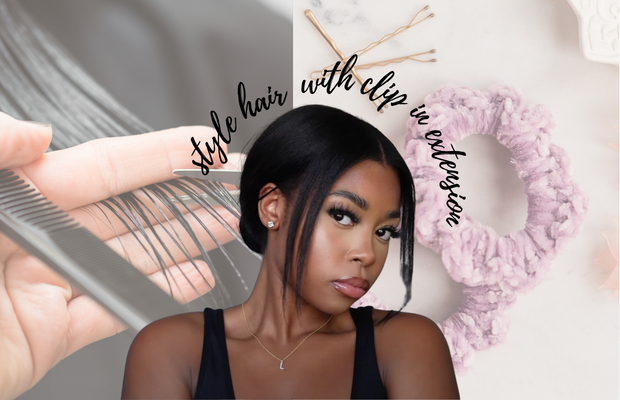Vietnamese Hair vs. Indian Hair vs. Chinese Hair: Which One Is Best for You?
It might be difficult to choose the best hair extension because there are so many possibilities. Chinese, Indian, and Vietnamese hair are some of the most popular varieties, each with distinctive characteristics in terms of texture, toughness, and style adaptability. Knowing the distinctions between different hair types can help you choose the one that best suits your beauty requirements, whether you're searching for voluminous waves, smooth straight strands, or naturally coarse textures.
Vietnamese Hair
Characteristics
- Naturally thick, strong, and smooth.
- Predominantly straight or slightly wavy in its raw form.
- Cuticles remain intact, reducing tangling and shedding.
- Sourced mainly from rural regions in Vietnam, where women maintain their hair naturally without harsh chemicals.
- Typically collected from single donors, ensuring uniformity in texture and quality.
Benefits
- Exceptional Durability: Due to its natural strength, Vietnamese hair lasts longer than many other hair types, making it a worthwhile investment.
- Smooth and Silky Texture: It is naturally soft, providing a sleek and polished look.
- Minimal Processing: Since it is usually collected from single donors, it undergoes little to no chemical treatment, preserving its natural integrity.
- Versatile Styling Options: It can be straightened, curled, bleached, and dyed without significant damage.
Readmore: Real vs. Fake Raw Hair: How to Spot the Differences Like a Pro
Best Uses
- Ideal for individuals who prefer sleek, straight, and naturally smooth hairstyles.
- Suitable for those looking for long-lasting extensions with minimal maintenance.
- Great for professional and polished looks due to its refined texture.
Indian Hair
Characteristics
- Naturally voluminous, soft, and bouncy.
- Comes in a variety of textures, including straight, wavy, and curly.
- Fine to medium thickness, making it lightweight yet full of movement.
- Sourced primarily from temples in India, where hair is donated as part of religious rituals.
- Often collected from multiple donors, which can result in slight variations in texture and color.
Benefits
- High Versatility: The range of natural textures allows for multiple styling possibilities, from sleek and straight to voluminous waves and curls.
- Lightweight and Comfortable: Despite being strong, Indian hair is lightweight, making it comfortable for daily wear.
- Blends Seamlessly: It blends effortlessly with different hair types, particularly those of African and Caucasian descent.
- Natural Movement: The soft texture gives a realistic and lively appearance to hair extensions and wigs.
Best Uses
- Ideal for those who love naturally voluminous hair with body and movement.
- Great for achieving wavy and curly hairstyles with a natural bounce.
- Suitable for individuals looking for flexible, easy-to-maintain hair extensions.
Chinese Hair
Characteristics
- Naturally straight and sleek, with a thick, coarse texture.
- Heavier and more resistant to breakage compared to Indian and Vietnamese hair.
- Often undergoes more processing (e.g., chemical treatments) due to its high availability in the market.
- Sourced from various donors across China, usually in large quantities.
- Typically has a lower cuticle alignment compared to Vietnamese hair, which may lead to tangling if not processed correctly.
Benefits
- Strong and Resilient: Due to its coarse nature, Chinese hair is highly durable and resistant to damage.
- Holds Straight Styles Well: It maintains a sleek, straight look even in humid conditions.
- Budget-Friendly: More affordable than Vietnamese and Indian hair due to its large-scale availability.
- Great for Wig Production: Its thickness provides an excellent foundation for wigs and full-coverage extensions.
Best Uses
- Best for individuals who want a permanently straight, sleek hairstyle with minimal effort.
- Ideal for those looking for budget-friendly hair extension options.
- Works well for synthetic fiber-blended wigs and weaves that require a strong base.
How to Choose the Best Hair Type for You
- Consider Your Natural Hair Texture: If you want extensions or wigs that blend seamlessly, choose a hair type that matches your natural hair.
- Think About Your Preferred Hairstyles: If you love sleek, straight styles, Vietnamese or Chinese hair may be ideal. If you prefer volume and natural waves, Indian hair is a great option.
- Assess Your Budget: Vietnamese hair is often the most expensive due to its quality and sourcing, while Chinese hair is more affordable. Indian hair falls in the mid-range.
- Factor in Maintenance Needs: If you want low-maintenance hair, Vietnamese and Chinese hair are better options. Indian hair requires more hydration and styling effort to maintain its natural beauty.
- Longevity Expectations: If you want hair that lasts the longest, Vietnamese hair is your best choice. Indian hair is also long-lasting but requires more maintenance, while Chinese hair may need extra care due to processing.
Conclusion
Choosing between Vietnamese, Indian, and Chinese hair depends on your personal preferences, styling goals, and maintenance routine. Vietnamese hair is ideal for those who want thick, sleek, and durable hair that requires minimal upkeep. Indian hair is best for those who prefer natural volume, curls, and versatility. Chinese hair is perfect for those seeking a straight, strong, and budget-friendly option. No matter which type you choose, investing in high-quality hair from reputable sources will ensure you get the best results for long-lasting beauty.






Comments
Post a Comment